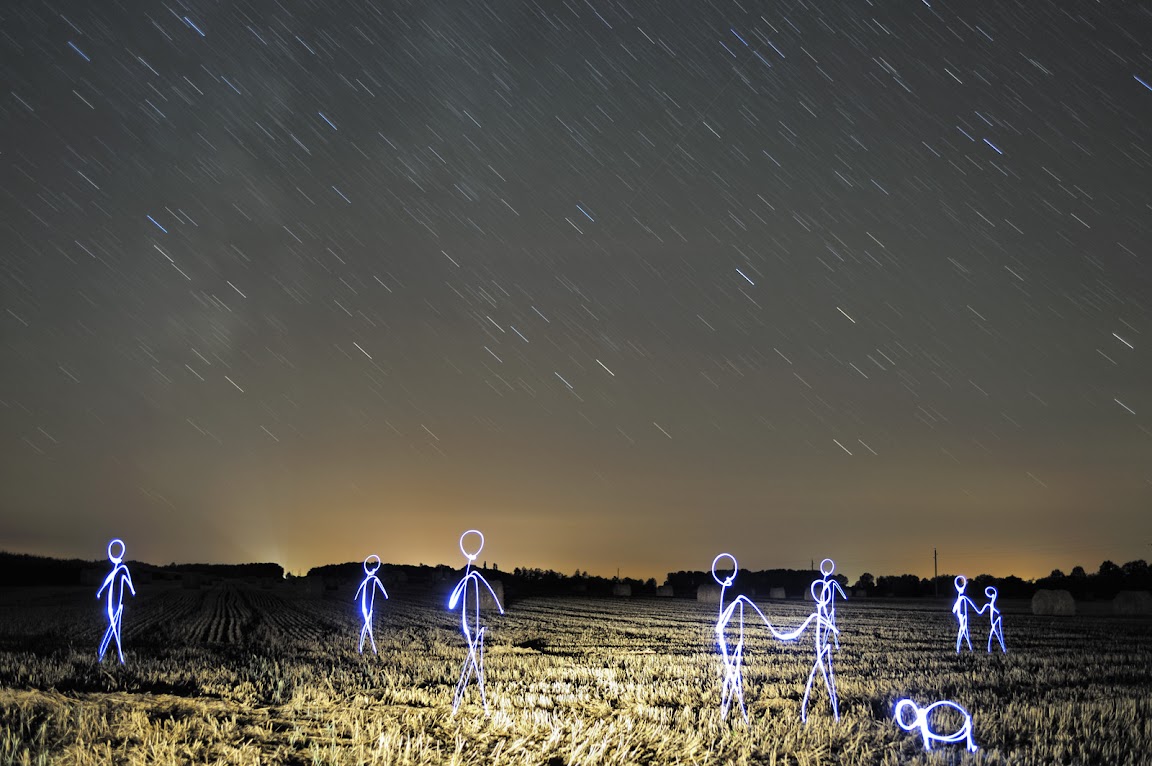Apropos of nothing, this extremely cool image, which was not digitally manipulated to look this way (other than, perhaps, adjusting white balances and such). The stars are streaking because of the long exposure time of the camera (probably several minutes, at least). The figures were drawn by the photographer with flashlights. Click on the photo to see the rest of his photo set.
Much in the same way you can draw figures in the dark with a sparkler, by leaving an afterimage in your retina from the bright light, he went into the frame of the photograph, waving a flashlight around to make these patterns, which appear in the final exposure.
 How come the light appears in the final exposure, but the blur of the photographer and, indeed, the flashlight itself, do not? Although they were all in frame for the same period of time, the intensity of the light allowed it to leave a lasting impression. An exposure is all about collecting light. A bright light that is present for part of the exposure may contribute as much to the final picture as a less-bright object that is there the entire time.
How come the light appears in the final exposure, but the blur of the photographer and, indeed, the flashlight itself, do not? Although they were all in frame for the same period of time, the intensity of the light allowed it to leave a lasting impression. An exposure is all about collecting light. A bright light that is present for part of the exposure may contribute as much to the final picture as a less-bright object that is there the entire time.